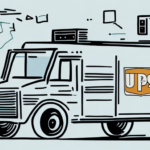Understanding UPS's Additional Handling Fee for Oversized Packages
For frequent shippers, navigating the complexities of shipping fees is essential to manage costs effectively. One such fee that often catches attention is the UPS additional handling fee. This surcharge applies to packages that exceed specific size or weight thresholds, with one of the most common triggers being a package's longest side exceeding 48 inches. This article delves into the intricacies of this fee, offering strategies to minimize its impact on your shipping expenses.
What is the UPS Additional Handling Fee and Its Significance?
The UPS additional handling fee is an extra charge imposed by UPS to cover the costs associated with processing and transporting packages that require special handling due to their size or weight. As of 2023, this fee stands at $24 per package, appended to the standard shipping costs.
This fee is significant for several reasons:
- Cost Implications: For businesses or individuals shipping large or heavy items frequently, these additional fees can accumulate, impacting overall profitability.
- Operational Planning: Understanding these fees helps in planning shipments more effectively, avoiding unexpected expenses.
- Competitive Pricing: Businesses can factor these costs into their pricing models to maintain competitive rates.
It's also crucial to recognize that the additional handling fee is not the sole surcharge UPS may apply. Other fees, such as fuel surcharges, residential delivery fees, and address correction fees, can further increase shipping costs. Staying informed about these fees allows for better budgeting and cost management.
The Impact of the Additional Handling Fee on Shipping Costs
The effect of the UPS additional handling fee on your shipping expenditures largely depends on the frequency and volume of oversized shipments. For occasional large packages, the fee might be a minor add-on. However, for businesses that regularly ship items exceeding size or weight limits, these fees can significantly elevate overall shipping expenses.
Furthermore, oversized packages may incur additional surcharges like the oversized package fee or peak season surcharges, which can compound costs.
Destination also plays a role in cost variations. Shipping to residential or remote areas often introduces extra fees, such as the residential surcharge or delivery area surcharge. These additional costs necessitate careful consideration when planning shipments to diverse locations.
Accurate measurement and weighing of packages are fundamental. UPS calculates fees based on precise dimensions and weight, so underestimating these can lead to unforeseen charges.
Common Reasons for Packages Exceeding 48 Inches in Length
Several factors contribute to packages surpassing the 48-inch length limit:
- Protective Packaging: Ensuring items are well-protected can sometimes lead to increased package dimensions.
- Long Tubes or Containers: Items like posters, artwork, or documents often require specialized packaging that extends length.
- Large Items: Furniture, sports equipment, and other bulky goods that cannot be disassembled naturally exceed size limits.
- Multiple Items: Combining several items into one package, such as in gift or care packages, can inadvertently increase dimensions.
Accurate measurement is essential to avoid unnecessary fees. Utilizing tools like a measuring tape and a scale can help ensure packages remain within size and weight thresholds.
Tips for Accurately Measuring Your Package to Avoid Additional Fees
Preventing the UPS additional handling fee begins with precise measurement and packaging. Here are actionable tips:
- Use a Measuring Tape: Measure the length, width, and height of your package accurately.
- Calculate Dimensional Weight: UPS uses dimensional weight pricing for large but lightweight packages. You can calculate it using [UPS's Dimensional Weight Calculator](https://www.ups.com/us/en/services/knowledge-center/article.page?name=calc-dimensional-weight&kid=aa7342b9).
- Optimize Packaging: Remove unnecessary packing materials and choose appropriately sized boxes.
- Disassemble Items: If possible, break down large items into smaller, more manageable parts.
- Utilize UPS's Online Tools: Use the [UPS shipping calculator](https://www.ups.com/us/en/shipping/resources/tools.page) to estimate costs based on your package's dimensions and weight.
By implementing these strategies, you can ensure that your packages comply with UPS's size and weight requirements, thereby avoiding additional fees.
Strategies to Reduce Package Size Without Compromising Contents
Minimizing package size while safeguarding contents is a balancing act. Here are effective strategies:
- Vacuum Sealing: Compress soft items like clothing and bedding using vacuum bags to reduce volume.
- Use Alternative Packaging: Opt for smaller boxes or specialized packaging materials that snugly fit your items.
- Efficient Packing: Arrange items tightly to minimize empty space, using air pillows or paper padding instead of bulky materials.
- Disassemble Large Items: Break down furniture or equipment into smaller parts that can fit into multiple smaller boxes.
Implementing these methods not only helps in reducing package size but also contributes to cost savings on shipping fees.
Exploring Alternative Shipping Carriers to Avoid UPS's Additional Handling Fee
If UPS's size and weight restrictions consistently lead to additional fees, exploring alternative shipping carriers might be beneficial. Here's a comparison:
- FedEx: Offers a maximum package size of 165 inches in combined length and girth, providing more flexibility for oversized items.
- DHL: Specializes in international shipping with different size and weight thresholds that might better suit certain shipments.
- USPS: For some large packages, USPS may offer competitive rates, especially for non-urgent deliveries.
When considering alternative carriers, evaluate factors such as:
- Shipping Rates: Compare costs for similar package sizes and destinations.
- Delivery Speeds: Ensure the carrier meets your delivery timeline requirements.
- Reliability: Research carrier reliability and customer reviews to ensure trustworthy service.
By diversifying your shipping options, you can find carriers that align better with your specific shipping needs, potentially reducing overall costs.
Negotiating with UPS to Waive or Reduce the Additional Handling Fee
For businesses with a substantial shipping volume, there's potential to negotiate fees with UPS. Here are steps to consider:
- Establish a Strong Account History: Demonstrating consistent and high-volume shipping can position you favorably for negotiations.
- Contact Your UPS Account Representative: Initiate discussions about your shipping patterns and express your concerns regarding additional fees.
- Propose Alternatives: Suggest solutions such as committing to a higher shipping volume in exchange for fee reductions.
- Leverage Competitive Offers: If alternative carriers offer better rates, use these as leverage in negotiations.
While UPS may not always accommodate fee waivers, presenting a well-prepared case can sometimes lead to favorable outcomes.
Additionally, consider utilizing [shipping software](https://www.businessnewsdaily.com/8156-shipping-software.html) that optimizes shipping processes and potentially reduces costs by selecting the most efficient carriers and packaging methods.
Understanding UPS's Policies on Oversized Packages
To effectively manage shipping costs and avoid unexpected fees, it's imperative to understand UPS's policies on oversized packages:
- Size and Weight Limits: Familiarize yourself with UPS's maximum allowable dimensions and weights. The [UPS Service Guide](https://www.ups.com/us/en/help-center/sri/shipping-service.page) provides detailed information.
- Packaging Requirements: Use sturdy packaging materials that can withstand handling and transportation without increasing dimensions unnecessarily.
- Labeling: Ensure packages are labeled correctly, including any required handling instructions.
- Special Handling: For hazardous or fragile items, adhere to specific packaging and labeling guidelines to avoid additional fees and ensure safe delivery.
Regularly reviewing UPS's official policies helps in maintaining compliance and optimizing shipping practices.
The Pros and Cons of Choosing UPS for Shipping Large Packages
When deciding on a shipping carrier for oversized packages, weighing the pros and cons is essential:
Pros
- Extensive Network: UPS offers a vast domestic and international network, ensuring reliable delivery across numerous destinations.
- Advanced Tracking: Comprehensive tracking systems allow shippers to monitor packages in real-time.
- Range of Services: UPS provides various shipping options tailored to different needs, including express and ground services.
Cons
- Higher Costs for Oversized Packages: As detailed, additional handling and other surcharges can significantly increase shipping costs.
- Strict Size and Weight Limits: UPS's stringent policies may not accommodate all oversized items, limiting flexibility.
- Potential for Additional Fees: Beyond the additional handling fee, other surcharges like fuel and residential delivery fees can complicate cost projections.
In conclusion, while UPS offers robust shipping solutions, it's crucial to assess your specific shipping requirements and compare carriers to determine the most cost-effective and efficient option for handling large packages.






















